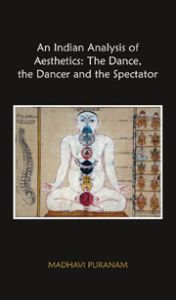
Indian Dance and Music in the traditional classical format are ingrained in the psyche of every Indian as 'divine'. The existence of beauty, its universal nature and portrayal in the arts is a subject that has received much attention. What is it that makes a dance beautiful and what is the mechanism of reacting to dance in a spectator? Where does the onus for relishing aesthetic pleasure lie and how does it come about? These are the questions whose answers remain elusive. Some of the best known critical-aesthetic thoughts and theories right from the ancient Greco-Roman philosophers such as Socrates, Plato, Aristotle, Cicero, Longinus, and Augustine, ancient Indian aestheticians like Bharata, Anandavardhana and Abhinavagupta to the much later Japanese aesthetician Zeami, and the later European theorists like Kant and Brecht, all lead to an element of the metaphysical in art. Chatura Damodara's Sangita Darpanam, a 17th century treatise on music and dance, indicates the presence of a rarefied instrument in humans that naturally perceives the essence of music and dance. Sahaja Yoga, a form of meditation propounded by Dr. Nirmala Srivastava, known to her followers as Shri Mataji Nirmala Devi, has a vast body of research in medicine on the apparatus similar to the one described in the Sarira Viveka in the Sangita Darpanam. Sarira Viveka offers the tremendous possibility of it being subjected to scientific research in the context of dance and music which could lead it to be accessed and utilized by the practitioners and spectators of dance and music. This book proposes that the most highly encoded art can be perceived and appreciated by the most ordinary of viewers through an innate mechanism that all humans are equipped with. It also offers a glimpse of the nuances of Indian traditional dance forms in terms of their form, technique, repertoire, and content that contribute significantly to the experience of the sublime by the spectator. This book will be of absorbing interest to the practitioners, spectators, academics and aestheticians of dance and music all over the world.